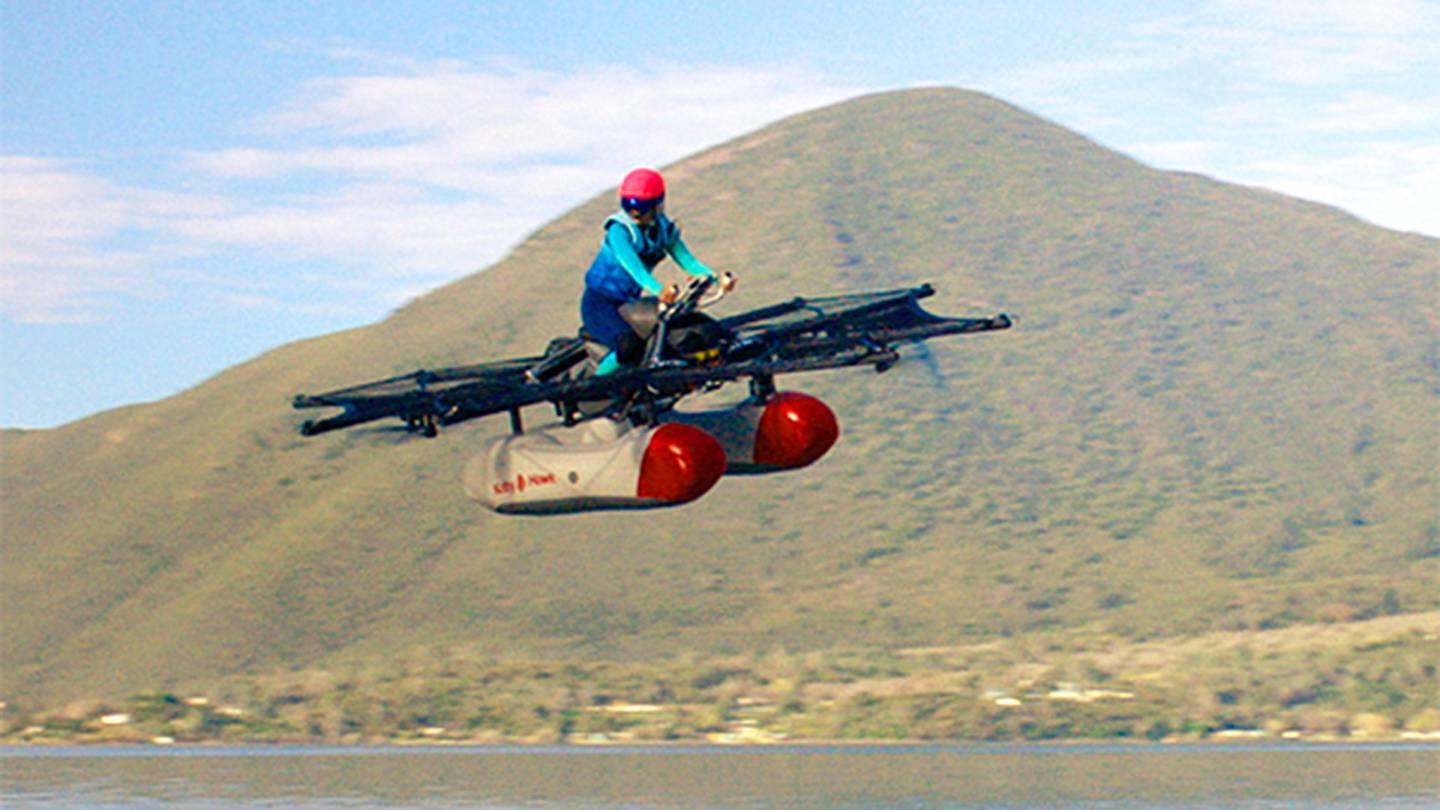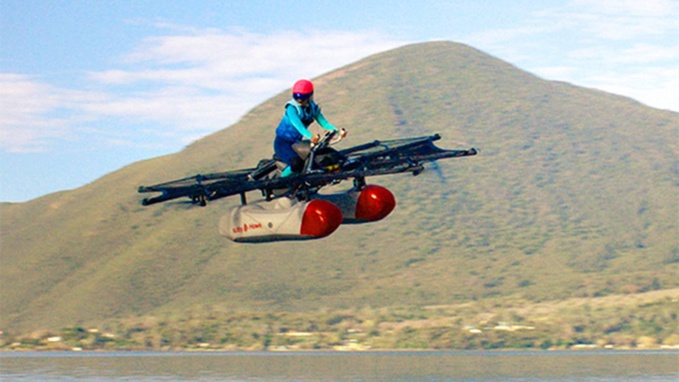Kitty Hawk Flyer flying copter is able to handle one person of average weight. Like an ordinary copter, it vertically comes off the ground and reaches a height of several meters. Larry Page’s participation in the flying vehicle start-up was revealed at the end of last year. According to Bloomberg, Kitty Hawk and Zee.Aero together employ more than 150 people, and the co-founder of Google has invested more than $ 100 million of its own funds in these projects.
The flyer’s creators claim that it meets the requirements for ultralight aircraft from the US Federal Aviation Administration. The flyer’s driver will not need a flight license, and you can learn to pilot the tiny plane in just a few minutes. The company promises to release the first production samples by the end of the year; the retail price has not been reported yet.
This is not the first example of an ultralight personal vehicle with vertical take-off. Last month, at the Geneva Motor Show, Airbus aerospace concern introduced the concept version of the flying car Pop.Up System, created in cooperation with ItalDesign auto-engineering company.
Back in 2013, the US founded a legislative framework for flying cars. Then the US Federal Aviation Administration (FAA) legitimated Terrafugia Transition, a flying car with folding wings of Massachusetts company Terrafugia. The vehicle was called "a light sport flying device". This implies the further work of business and regulators on certification and rules for the movement of flying cars in public airspace. In December 2015, the FAA authorized the company to conduct test flights of a new vehicle. Currently, Terrafugia continues testing its flying cars, planning to bring them to the market in 2019.
In the meantime, Uber Technologies Inc. announced beginning of cooperation with aircraft constructors to develop a car with vertical take-off. Uber intends to hold The first tests of the new devices in 2020.
The company has signed an agreement to test a new vehicle with several cities, including Fort Worth, Texas, and Dubai. Texas officials are already planning to the subway in order to introduce the new technology. As for the United Arab Emirates (UAE), Uber Technologies Inc. began cooperation with the Dubai Road and Transport Authority, which finances research in pricing and demand in the region. In addition, the American company plans to start working with firms in the real estate market to build special take-off and landing stations.
source: bloomberg.com, theguardian.com
The flyer’s creators claim that it meets the requirements for ultralight aircraft from the US Federal Aviation Administration. The flyer’s driver will not need a flight license, and you can learn to pilot the tiny plane in just a few minutes. The company promises to release the first production samples by the end of the year; the retail price has not been reported yet.
This is not the first example of an ultralight personal vehicle with vertical take-off. Last month, at the Geneva Motor Show, Airbus aerospace concern introduced the concept version of the flying car Pop.Up System, created in cooperation with ItalDesign auto-engineering company.
Back in 2013, the US founded a legislative framework for flying cars. Then the US Federal Aviation Administration (FAA) legitimated Terrafugia Transition, a flying car with folding wings of Massachusetts company Terrafugia. The vehicle was called "a light sport flying device". This implies the further work of business and regulators on certification and rules for the movement of flying cars in public airspace. In December 2015, the FAA authorized the company to conduct test flights of a new vehicle. Currently, Terrafugia continues testing its flying cars, planning to bring them to the market in 2019.
In the meantime, Uber Technologies Inc. announced beginning of cooperation with aircraft constructors to develop a car with vertical take-off. Uber intends to hold The first tests of the new devices in 2020.
The company has signed an agreement to test a new vehicle with several cities, including Fort Worth, Texas, and Dubai. Texas officials are already planning to the subway in order to introduce the new technology. As for the United Arab Emirates (UAE), Uber Technologies Inc. began cooperation with the Dubai Road and Transport Authority, which finances research in pricing and demand in the region. In addition, the American company plans to start working with firms in the real estate market to build special take-off and landing stations.
source: bloomberg.com, theguardian.com



















